Content:
- Varieties of large black currants.
- Sweet varieties of black currant.
- Early varieties of black currant.
- Medium varieties of black currant.
- Late varieties of black currant.
- How to make 2 or even 3 from one purchased seedling.
Thanks to the work of breeders, today we have a lot of different varieties of black currant (more than 200). It can even be difficult for gardeners to understand such a wide range. For readers of "Dachnaya Plot" we have selected varieties of currants that are the best. The largest, the sweetest, the most productive.
Before you get acquainted with them, I want to share one small, but very useful “secret”.
All blackcurrant varieties offered here are self-fertile, BUT when planting several bushes of different varieties, the yield and size of the berries will be noticeably greater. Cross-pollination always plays a positive role.
If you intend to purchase early currants, keep in mind that they will bloom in the first half of May. In regions where there are strong night frosts at this time, the plants will have to be covered. Otherwise, one such frost can destroy the entire crop.
Varieties of large black currants
Description of black currant Yadrenaya
Vigorous - the largest currant. Its fruits are more like large grapes, although the size and weight of the berries are not the same (from 3 to 8 grams). The variety is mid-late, the bush is compact, spherical in shape, 1 - 1.5 m high, unfortunately the bushes quickly age and require replacement after 5 - 7 years. The berries have a sweet and sour taste, juicy, fleshy, universal purpose with a thick skin.
The variety is characterized by good winter hardiness, high self-fertility, resistance to bud mites and hazel grouse.
- Productivity from 3 to 6 kg. berries from one bush.
- Berries weighing from 3 to 8 grams.
- Flowering begins in the first half of May.
- The harvest ripens in the third decade of July.
Advantages: large fruits, high winter hardiness, self-fertility, good yield.
Flaws: the bushes age quickly and require careful care, lack of resistance to powdery mildew, the berries are not one-dimensional and sour (not for everyone).
Description of the Dobrynya variety
Dobrynya - a large-fruited variety of black currant. The weight of the largest berries reaches 7 grams, but they are also of different sizes. The taste is sweet and sour, the skin is dense, sugar content is 6.9%, ascorbic acid (vitamin C) is 200 mg. per 100 gr. The ripening period is average, the bush is compact, not tall 1 - 1.5 m. The variety is winter-hardy, early-bearing, and resistant to powdery mildew. Tolerates spring frosts and drought well.
- Productivity is from 1.6 to 2.4 kg of large berries from 1 bush.
- Weight of berries from 3 to 7 g.
- Currant blooms in mid-May.
- The harvest ripens in the second half of July.
Advantages: very large and tasty berries, compact bush, winter hardiness, resistance to frost, drought, powdery mildew.
Flaws: average yield, heterogeneity of fruits, average resistance to bud mite and anthracnose.
Selechenskaya - 2
Selechenskaya - 2 currants with very large and tasty berries (up to 6 grams). The taste is sweet with sourness, sugar content - 7.3%, ascorbic acid - 160 mg. per 100 gr. Early ripening, tall, erect bush 1.5 - 1.8 m. The variety is winter-hardy, easily tolerates drought, and is resistant to powdery mildew.
- Productivity from 2.5 to 5 kg. large berries from 1 bush.
- Weight of berries from 3 to 6 g.
- Blooms in the first ten days of May.
- The harvest ripens in the first ten days of July.
Advantages: large, tasty (considered one of the most delicious) berries, winter hardiness, resistance to powdery mildew, good yield.
Flaws: average resistance to bud mite, anthracnose.
The best varieties of sweet blackcurrants
Green haze
Green haze - medium ripening period, the bush is not tall, medium spreading, begins to bear fruit in the second year after planting. The berries are aromatic, sweet and sour, sugar - 12.2%, ascorbic acid 192 mg. per 100 gr. Winter hardiness is good, resistant to powdery mildew, self-fertile.
- Productivity from 4 to 5 kg. berries from 1 bush.
- Weight of berries is from 1.5 to 2.5 g.
- Blooms in the second half of May.
- The harvest ripens by mid-July.
Advantages: tasty, sweet berries, early fruiting, high yield, winter hardiness.
Flaws: weak resistance to bud mite.
Nina
Nina - one of the best early ripening varieties, the bushes are medium-sized, dense, forming many basal shoots. Large berries (from 1 to 1.3 cm in diameter), relatively one-dimensional, sweet - sugar 9 — 11%, ascorbic acid - 180 - 270 mg. per 100 gr. Productivity is good, stable, ripening is smooth. Winter-hardy, self-fertile, average resistance to powdery mildew.
- Productivity is 3 - 4 kg, but with good care up to 8 kg.
- Weight of berries from 2 to 4 g.
- Blooms in the first half of May.
- The harvest ripens in early July.
Advantages: Sweet, large, one-dimensional berries, smooth ripening, winter hardiness, stable and high yield. Easily propagated by cuttings.
Flaws: poor transportability of fruits, poor resistance to terry and bud mites.
Bagheera
Bagheera - sweet currant, medium ripening, medium-sized bush 1 - 1.5 m high. The berries are relatively large, ripen together and do not fall off for a long time, sugar - 9 - 12%, ascorbic acid (vitamin C) 155 - 190 mg per 100 g. It begins to bear fruit the very next year after planting. The variety is very winter-hardy, tolerates heat and drought well, and is moderately resistant to diseases.
- Productivity 3 - 4.5 kg. berries from 1 bush.
- Fruit weight 1.1 - 2.2 g.
- Blooms in the second decade of May.
- The harvest ripens in mid-July.
Advantages: excellent drought and frost resistance, sweet, tasty berries that ripen quickly and are well transported.
Flaws: Resistance to powdery mildew, anthracnose, and bud mite is average.
Early varieties of black currant
Exotic
Exotic - early ripening, compact, erect bush 1 - 1.5 m high. The berries are large with a dry detachment, sweet and sour taste, thin-skinned, sugar 8.9%, ascorbic acid 198 mg. per 100 gr. The variety is self-fertile, winter-hardy, quickly begins to bear fruit, and is resistant to columnar rust and powdery mildew.
- Productivity 1 - 1.5 kg. from 1 bush.
- Weight of berries 2.5 - 3.5 g.
- Blooms in the first half of May.
- The harvest ripens in early July.
Advantages: of the early varieties, the largest-fruited, winter-hardy, and resistant to powdery mildew.
Flaws: susceptibility to bud mite, terry and anthracnose.
Izyumnaya
Izyumnaya - early currant, medium-sized bush, slightly spreading, 1 - 1.5 m high. Large berries, sweet taste, sugar 9.1%, ascorbic acid (vitamin C) - 192 mg per 100 g. Winter-hardy, drought-resistant variety, resistant to powdery mildew and bud mite.
- Productivity 1.7 - 2 kg per bush.
- Weight of berries 2 - 3.2 g.
- Blooms in the first half of May.
- The harvest ripens in the first half of July.
Advantages: resistant to frost, drought, powdery mildew, large fruits.
Flaws: poor rooting of cuttings during propagation.
Summer resident
Summer resident - early ripening, low, spreading bush about a meter high. Large berries, with thin skin, sweet taste, sugar 9.3%, ascorbic acid 190 mg. per 100 gr. The variety is winter-hardy, self-fertile, resistant to bud mite and powdery mildew, the yield is average.
- Productivity 1.4 - 1.8 kg. from 1 bush.
- Weight of berries 2.2 - 4 g.
- Blooms in the first ten days of May.
- The harvest ripens in early July.
Advantages: large fruits, early ripening, disease resistance.
Flaws: The branches may lie on the ground, supports are desirable, the ripening of the berries is not smooth, and when overripe, they can crumble to the ground.
Medium varieties of black currants
Description of Titania blackcurrant
Titania - medium ripening period, medium-sized bush up to 1.5 m high, thick shoots, grow vertically. The berries are not the same size, sweet and sour taste, with greenish pulp, strong skin and dry peel, sugar 8.7%, ascorbic acid 170 mg. per 100 gr. Winter-hardy, self-fertile variety, practically does not suffer from powdery mildew.
- Productivity 1.5 - 2.5 kg. berries from 1 bush.
- Weight of berries 1 - 2.5 g.
- Blooms in mid-May.
- The harvest ripens in the first half of July.
Advantages: Excellent resistance to powdery mildew; fruits do not fall off when ripe.
Flaws: extended ripening time and non-one-dimensional berries.
Black Pearl
Black Pearl - a medium variety of black currant, a medium-sized bush 1 - 1.5 m high. The berries are one-dimensional with a dry detachment, universal purpose, taste sweet and sour, sugar - 9.3%, vitamin C per 100 g. fruits 133 mg. The variety is self-fertile, very frost-resistant, with good yield, but resistance to powdery mildew is average.
- Productivity 3.5 - 5 kg. berries from 1 bush.
- Fruit weight 1.3 - 1.4 g.
- Blooms in the first ten days of May.
- The harvest ripens in mid-July.
Advantages: consistently high yields, large fruit, uniformity and good transportability of berries, high frost resistance.
Flaws: Resistance to powdery mildew is average.
Pygmy
Pygmy - medium ripening period, medium-sized bush, not spreading, compact. Very large berries, with thin skin, sweet, dessert taste, sugar - 9.4%, vitamin C per 100 g. berries contain 150 mg. The variety is self-fertile, frost-resistant, high-yielding, and resistant to anthracnose and powdery mildew.
- Productivity 1.6 - 5.7 kg. berries from 1 bush.
- Fruit weight 2.3 - 7.5 g.
- Blooms in mid-May.
- The harvest ripens at the end of July.
Advantages: high winter hardiness, high yield, large fruits.
Flaws: fruits of different sizes, average resistance to bud mite.
Late varieties of black currant
Daughter
Daughter - late ripening, slightly spreading, not tall bush about a meter high. The berries are large, dry, universal purpose, sweet and sour taste, sugar - 7.5%, ascorbic acid 160 mg. per 100 gr. The variety winters well, is drought-resistant, self-fertile, resistant to bud mites, but resistance to powdery mildew is not so good.
- Productivity 3 - 4 kg.berries from 1 bush.
- Fruit weight 1.2 - 2.3 g.
- Blooms in the second half of May.
- The harvest ripens in early August.
Advantages: good yield and high quality fruit.
Flaws: may be affected by powdery mildew.
Vologda
Vologda — A late variety of black currant, the bush is medium-sized, very spreading, dense. The berries are quite large, with a dry detachment and a sweet and sour taste, sugar 7.6%, ascorbic acid 175 mg. per 100 gr. Self-fertility is high, winter hardiness is good, but resistance to spring frosts is weak. Resistant to diseases and pests.
- Productivity 3.5 - 4 kg. berries from 1 bush.
- Fruit weight 1.4 - 2.2 g.
- Blooms in the second decade of May.
- The harvest ripens in late July - early August.
Advantages: good yield, large fruits, disease resistance.
Flaws: very spreading bush, supports for branches are required.
Description of the variety Lazy
Lazy person - late ripening, vigorous bush, dense height 1.5 - 1.8 m. The berries are large, round, sweet taste, sugar - 8.8%, vitamin C per 100 g. fruits 117 mg. The variety is winter-hardy, self-fertile, resistant to terry, anthracnose, but moderately resistant to powdery mildew and bud mite.
- Productivity 1.9 - 2.2 kg. berries from 1 bush.
- Fruit weight 2 - 3 g.
- Blooms in the second half of May.
- The harvest ripens in late July - early August.
Advantages: resistance to many diseases, dessert taste of fruits.
Flaws: not uniform ripening of berries, not stable yield.
How to make 2 or even 3 from one purchased currant seedling
Currant seedlings are actively sold with two or three woody shoots.It is recommended to trim them, leaving 20 cm above the ground, but you can do it differently.
Place the seedling in the trench at an angle of 10-15 degrees so that its roots are located deeper than the top of the shoots. Cover all shoots with loose soil, leaving small tops on the surface. Leaves that end up in the ground can be snatched away without damaging the buds.
From buds embedded in the soil, roots and shoots are formed along the entire length of the branches. They develop very quickly, because... The root system of the mother plant is actively working. The plant forms new shoots with a more powerful fibrous root system.
Next fall, dig them up, cut them with pruning shears into individual seedlings and plant them in a permanent place. So, instead of one purchased seedling, you will have several.
If you manage to acquire a new valuable variety of black currant, you can quickly propagate it in this way.
Video about the best varieties of blackcurrant
A very interesting and informative video from a fruit nursery where a comparative analysis of different varieties of black currant is carried out.
Other varieties of currants:
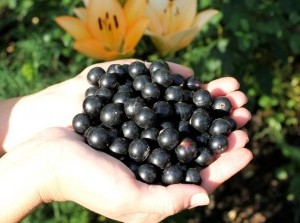
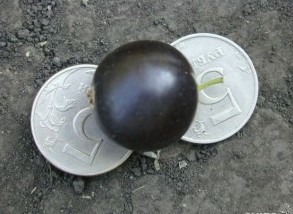
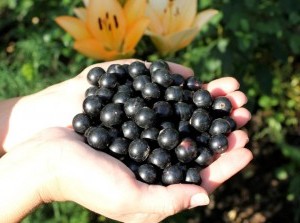
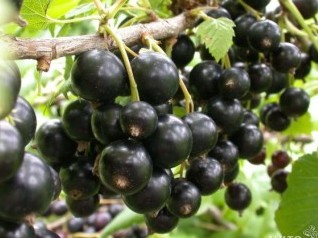
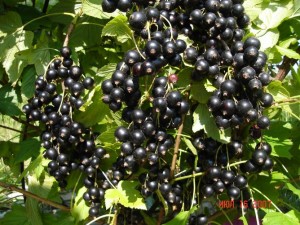
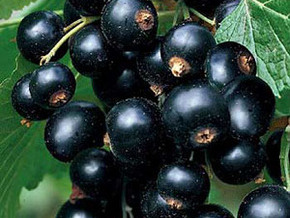
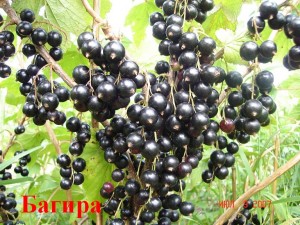
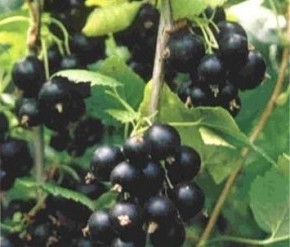
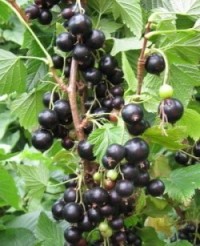
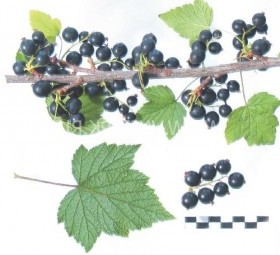
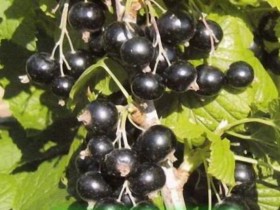
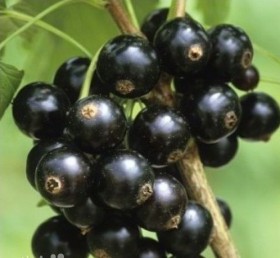
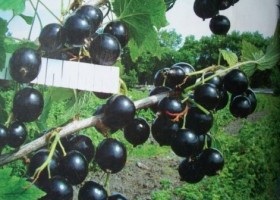
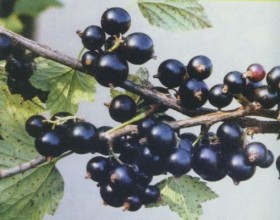
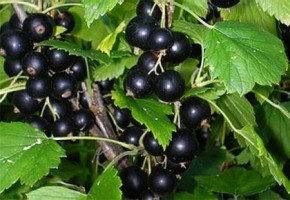
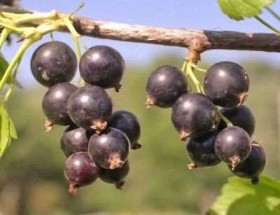

 (18 ratings, average: 4,17 out of 5)
(18 ratings, average: 4,17 out of 5) CUCUMBERS NEVER GET SICK, I'VE BEEN USING ONLY THIS FOR 40 YEARS! I SHARE A SECRET WITH YOU, CUCUMBERS ARE LIKE THE PICTURE!
CUCUMBERS NEVER GET SICK, I'VE BEEN USING ONLY THIS FOR 40 YEARS! I SHARE A SECRET WITH YOU, CUCUMBERS ARE LIKE THE PICTURE! You can dig a bucket of potatoes from each bush. Do you think these are fairy tales? Watch the video
You can dig a bucket of potatoes from each bush. Do you think these are fairy tales? Watch the video
 How our fellow gardeners work in Korea. There is a lot to learn and just fun to watch.
How our fellow gardeners work in Korea. There is a lot to learn and just fun to watch. Eye trainer. The author claims that with daily viewing, vision is restored. They don't charge money for views.
Eye trainer. The author claims that with daily viewing, vision is restored. They don't charge money for views. A 3-ingredient cake recipe in 30 minutes is better than Napoleon. Simple and very tasty.
A 3-ingredient cake recipe in 30 minutes is better than Napoleon. Simple and very tasty. Therapeutic exercises for cervical osteochondrosis. A complete set of exercises.
Therapeutic exercises for cervical osteochondrosis. A complete set of exercises. Which indoor plants match your zodiac sign?
Which indoor plants match your zodiac sign? What about them? Excursion to German dachas.
What about them? Excursion to German dachas.
Thank you for such a useful article. I have a question about the variety of currant, tell me, this type of currant is really frost-resistant. Even in winter, it’s sooooo cold, terrible frosts Many fruits simply cannot tolerate such cold weather. Currants were especially affected. Please advise which variety is better to buy, so that it is definitely very frost-resistant. Thank you.
Inna, "Viksne" is actually a frost-resistant variety. I have heard only good reviews about it, and not only in terms of frost resistance, but also everyone praises the taste of this currant. But I can’t say anything about how he will spend the winter with you; you’ll write to us later. In addition to “Viksne”, winter-hardy varieties of red currant are “Cascade”, “Ural Beauty”, “Serpentine”.
We don’t sell such varieties... unfortunately... (((
I have a dacha in the Moscow region. Part of the area is in partial shade. I spent a long time choosing which berry bush to plant there. Purely by chance I ended up in a plant nursery. It was there that they advised me to plant black currant berry bushes Musketeer, P9 Tim in partial shade. I bought three bushes to try. All the bushes have taken root well, the main thing is that they are resistant to bud mites and are not affected by rust. Powdery mildew, anthracnose and septoria - all these common diseases of currants are not scary. Blackcurrant Musketeer loves abundant watering. The berries are very large, abundant harvest.
No matter how much I searched for a vigorous variety, I can’t find it.
Borya, this variety can be ordered online